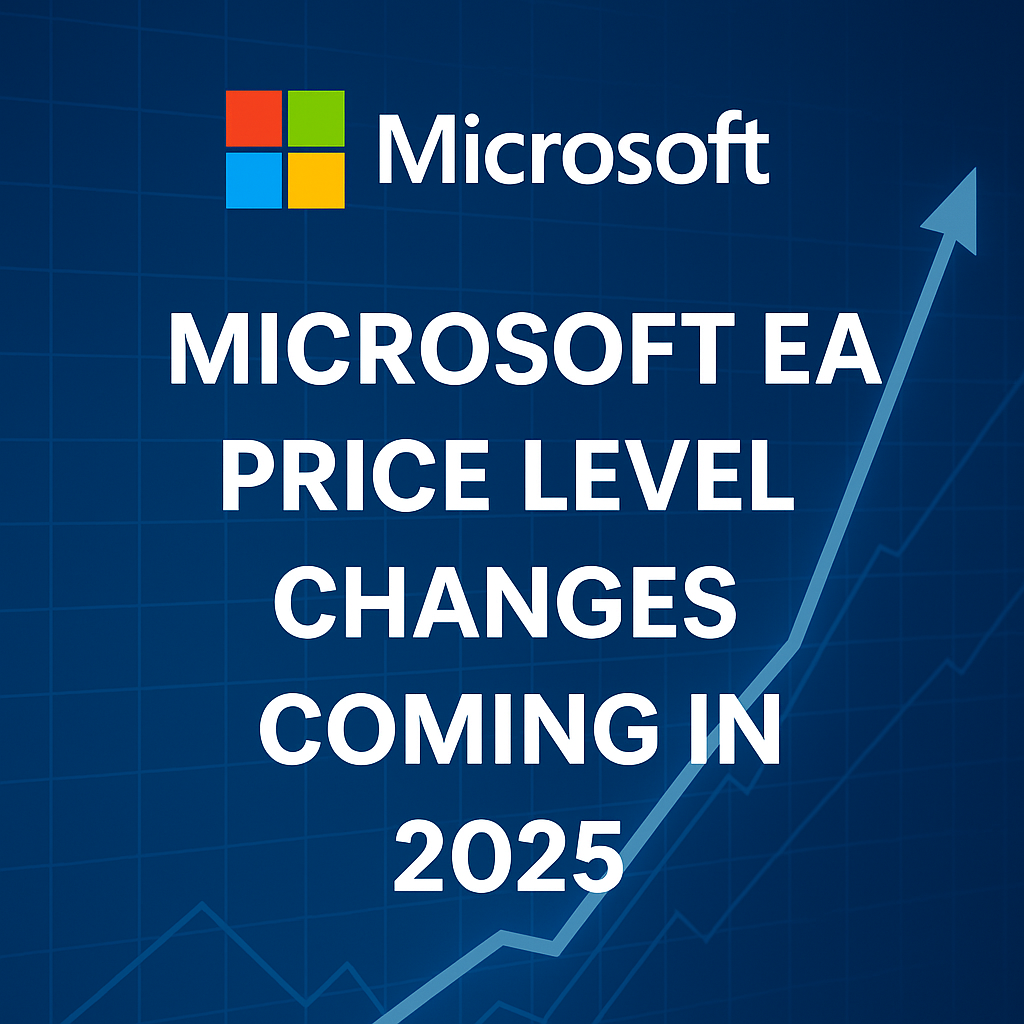Migrating Microsoft Enterprise Agreement to CSP
Consider the below factors and talk to an GetTech Microsoft licensing specialist before deciding.

Microsoft EA Price Level Changes Coming in 2025 — What You Need to Know
From November 1, 2025, Microsoft will discontinue tier-based discounts (Levels B, C, and D) for Online Services purchased under the Enterprise Agreement (EA)

DICOM + FHIR, better together
Healthcare systems worldwide are rapidly moving their data to the cloud to enhance patient diagnosis, improve the quality of care, and drive transformative insights into how healthcare is delivered. This shift makes perfect sense, as cloud technology offers enhanced data security, reduced data management costs, and the power of machine learning. However, as health data enters the era of cloud computing, leading organizations have realized that the way data is brought into the cloud is critical. Maximizing the benefits of cloud computing isn’t just about migrating data in its current custom formats—it’s about leveraging the right tools to enrich and standardize the data during the transition, enabling greater utility and value once it’s in the cloud.
DICOM is specifically designed for managing, storing, and transmitting medical images, such as X-rays, CT scans, and MRIs, along with a protocol for transferring these images between systems. In contrast, FHIR is a standard for electronically exchanging broader healthcare information, including patient demographics, medical and dental histories, treatment plans, and other clinical data. While DICOM focuses on imaging data, FHIR provides a framework for representing a wide range of healthcare information in a standardized format.
GetTech’s Solution for Seamless DICOM to FHIR Data Conversion
GetTech offers a comprehensive solution to simplify and automate the conversion of healthcare data between the DICOM and FHIR standards, ensuring compatibility, accuracy, and usability. Here’s how we tackle the challenges:
- From DICOM Files to FHIR Resources
Our solution transforms DICOM files into FHIR-compatible resources such as Observation and ImagingStudy. We extract relevant imaging metadata, including modalities, study descriptions, and timestamps, and map these directly to FHIR fields, enabling seamless integration with existing healthcare systems. - Utilizing FHIR System Codes
We leverage FHIR system codes to ensure consistent, standardized representation of data across systems. By mapping DICOM identifiers, such as study and series UIDs, to FHIR-compliant codes, we enable interoperability and ensure data can be used effectively across different healthcare applications. - Extracting and Representing Custom DICOM Attributes
For DICOM attributes that are not directly supported by default FHIR fields, our solution identifies and extracts these custom attributes. We create extensions or map them into appropriate FHIR structures, ensuring that all critical data from the DICOM file is accurately represented in FHIR without losing context or specificity. - Linking Data to FHIR Patient Resources
To provide a complete clinical view, we connect imaging data with the relevant FHIR Patient resources. Using identifiers such as patient IDs or demographic details from DICOM headers, we ensure that imaging data is securely linked to the correct patient records in FHIR, facilitating comprehensive patient care and analysis.
GetTech’s expertise and tools streamline the process of converting, mapping, and integrating DICOM and FHIR data, enabling healthcare providers to unlock the full potential of their data while maintaining compliance, security, and interoperability.
Considerations of Migrating to CSP
You might consider using CSP to augment your licensing portfolio, letting you to get more out of your Microsoft licenses and investments in the cloud. It can be a viable option for your organisation.
Microsoft Enterprise Agreement may still be the best choice if you have over 2400 employees, and the way your IT infrastructure is designed may require standard licensing terms and conditions that you get through EA
If you are evaluating a full or partial switch from an Enterprise Agreement to a Microsoft Customer Agreement, here are a few things you should think about:
- What are the differences between licensing through CSP and Microsoft Enterprise Agreement?
- Do the new rules match how you use Microsoft licences in your company?
- Will you lose the discounts you get through EA?
- How will you be invoiced?
- Do you want to commit to one or three years, be flexible and pay 20% more, or mix-and-match flexible and long-term licenses?
- How does CSP benefit your business growth, digital transformation and cloud migration?

Why GetTech?
We proudly serve a diverse range of businesses hailing from Hungary, Switzerland, and Germany, helping them unlock their potential and scale new heights. Our strategic partnerships with industry giants like Microsoft, Databricks, and GitHub, enable us to offer best-in-class solutions.


Many years of experience
Our architect colleagues have many years of experience in infrastructure and software development.

Microsoft Certified Partner
We are a Solution Partner recognized by Microsoft and a Cloud Solution Provider reseller. We have Digital & App Innovation, Data & AI Azure certifications.

$ 2 million Azure Consumption
With our help, our customers have already used more than $ 2 million of Azure cloud infrastructure consumption.
Watch our short video!
The migration to the cloud involves the process of transferring data, applications, and other business elements from an organization's on-premise infrastructure to the cloud platform.

.svg)
